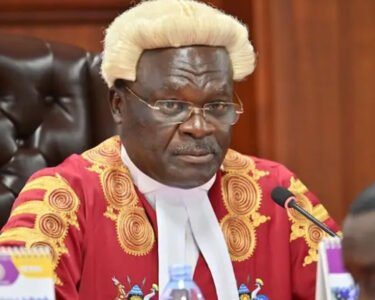The Health Ministry has dispatched its teams of scientists to support leaders in Namayingo and Kayunga districts in containing the outbreak of cholera.
The outbreak in Namayingo was confirmed on Monday after three out of four samples collected from the suspects turned out positive when tested at the Kampala-based Central Public Health Laboratories (CPHL).
In Kayunga, the outbreak was confirmed two weeks ago, according to Mr Emmanuel Ainebyoona, the spokesperson of the Ministry.
Mr Ainebyoona further told this publication that their teams have been on the ground since last week following the July 15 alert.
“Our teams have been there in Kayunga for like a week and the same in Namayingo to help the districts. The cases are not very many. Only a few people are affected,” Mr Ainebyoona said yesterday, adding: “So far, three samples from Kayunga and three from Namayingo have tested positive.”
A detailed document from the Health Ministry shows that on July 15, Namayingo District Health Office (DHO) received an alert of a suspected cholera case, a child of two years and nine months at Bugana HC III.
The child is a resident of Secho Village, Sigulu Sub-county in Bumalenge Parish.
The Ministry said the child presented with “profuse watery diarrhoea (multiple episodes), vomiting and stomachache”.
Two days later, the ministry noted, another two suspected cholera cases, including the caretaker with a five-day travel history to Dumbe Market in Kenya and a child four-year-old from the same household as the index case, were admitted.
“They also presented with profuse watery diarrhoea (multiple episodes), vomiting and stomachache. A total of four (4) samples have since been collected and sent to Central Public Health Laboratories (CPHL) for testing,” the ministry stated.
“On July 24, results from CPHL confirmed isolation of Vibrio cholerae in three of the four collected samples and the DHOs notified,” the ministry added.
According to the Health Ministry, because of poor sanitation and other issues such as floods, the country experiences frequent outbreaks of Cholera with an average of 1,850 cases and 45 deaths annually.
“A total of 60 contacts have since been identified and follow-up is ongoing. Village Health Teams have been mobilised to continue house-to-house campaigns on early medication and seeking for patients presenting with similar signs and symptoms,” the Health ministry further noted.
By Tuesday, the Namayingo rapid response team was supposed to be deployed immediately in Bumalenge Parish, Sigulu Sub-county and contact tracing and follow-up would continue.
The District Health Officer for Kayunga, Dr Ahmed Matovu, said he couldn’t talk when our reporter called him last evening, but Mr Moses Ddumba, the Resident District Commissioner, said the patients with Cholera are hospitalised in Kayunga Hospital.
“We have not registered any other new cases today. We had a meeting on the issue of cholera today and we are sensitising the public on preventive measures,” Mr Ddumba said.
Siguli Island
The assistant District Health Officer for Namayingo, Mr Mathias Namuhaywa Mangeni, confirmed that there is a cholera outbreak in Sigulu Islands.
Mr Mangeni said eight people who had symptoms of cholera were attended to by health workers, while four samples were taken to the CPHL.
“We have not registered death, but with Cholera, of the 100 people who get the disease, 25 will complain and only five will come to the hospital,” Mr Mangeni said.
He added that on the island where the disease has been confirmed, some residents do not have toilets.
The deputy Resident District Commissioner for Namayingo, Mr Trevor Solomon Baleke, told this publication that the health team is doing everything possible to ensure the disease doesn’t spread.
The World Health Organisation indicates that effective prevention of cholera requires providing clean water and proper sanitation to populations who do not yet have access to such essential services.
This, the WHO said works hand-in-hand with vaccination with Oral Cholera Vaccines and health education, and good food hygiene.





